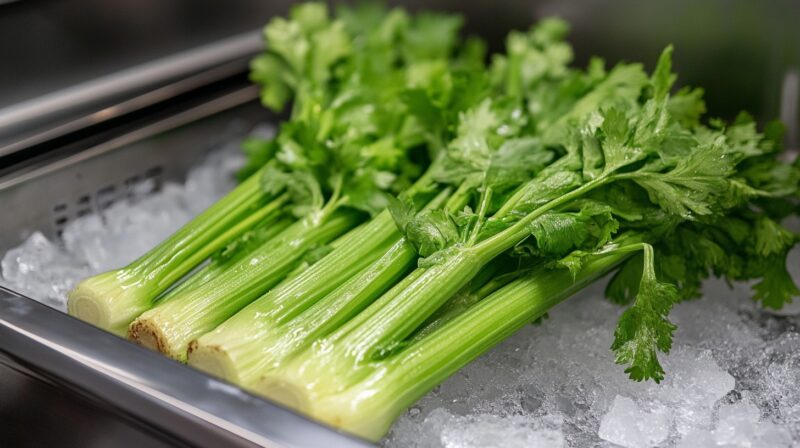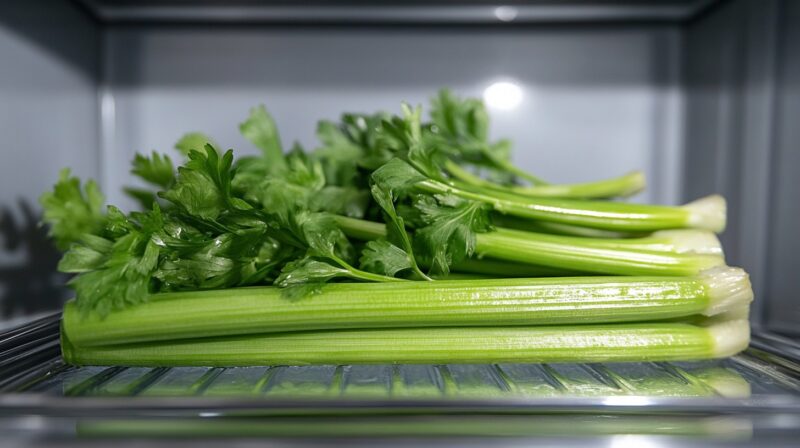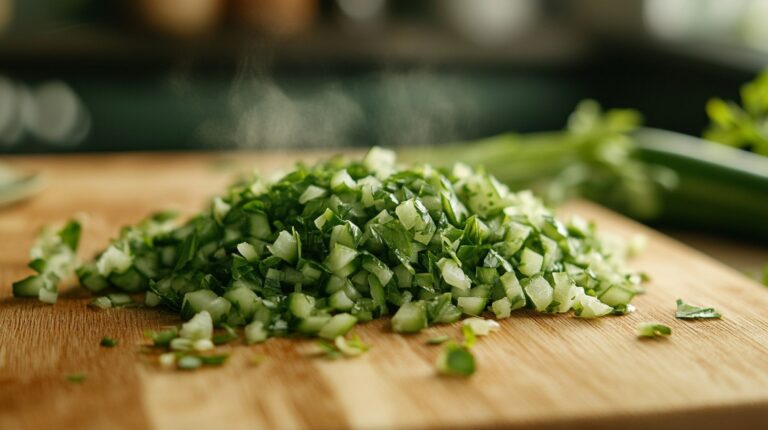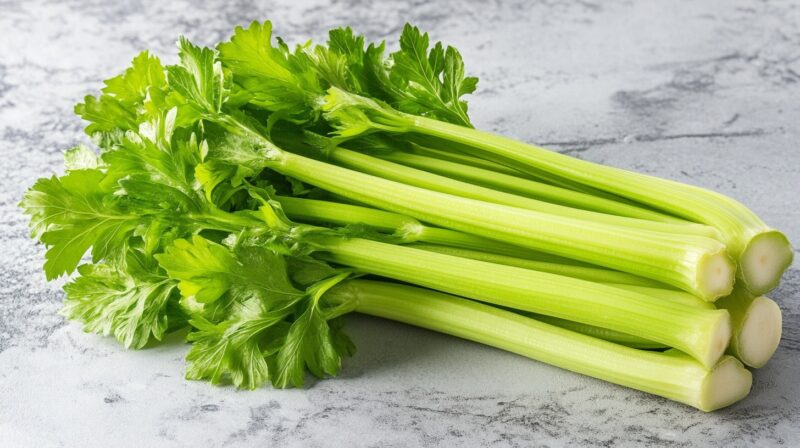Wondering if you can freeze celery and how to do it correctly? The good news is, you can freeze celery to extend its shelf life and prevent waste.
While frozen celery loses some of its signature crunch, it’s perfect for adding to soups, stews, and casseroles.
With the right preparation, you can ensure your celery stays fresh and flavorful in the freezer for months.
Here’s a simple guide to freezing celery the right way.
How to Freeze Celery (Step-by-Step Guide)
Freezing this versatile vegetable is easy with the following steps:
| Step | Description |
|---|---|
| Preparation | Wash, trim, and chop into desired sizes. |
| Blanching (Optional but Recommended) | Boil for 2-3 minutes, then transfer to an ice bath. |
| Drying | Drain and pat dry to remove moisture. |
| Flash Freezing | Freeze in a single layer on a baking sheet. |
| Storing | Transfer to airtight bags, label, and store for up to 18 months. |
Why Freeze Celery?
Freezing is a practical way to extend the shelf life of this vegetable, especially when you can’t use it all before it spoils.
Fresh stalks typically last about a month when stored properly in the fridge, but freezing can keep them usable for up to 18 months.
It is especially helpful for those who only use it occasionally in recipes and want to avoid waste.
- Prolonged Shelf Life: While fresh produce may last around a month in the fridge, freezing can extend its usability for up to 18 months. It is perfect for those who may not use it often but want to have it on hand when needed.
- Convenient for Cooking: Prepping and freezing in advance saves time in the kitchen. Frozen pieces can be easily added to numerous dishes without requiring additional chopping or prep work.
- Great for Bulk Purchases: If you buy in bulk or end up with extra, freezing is an excellent way to preserve it. It reduces food waste and ensures you have a supply ready to go.
- Not Suitable for Raw Dishes: It’s important to note that frozen portions lose some of their crispness. As a result, they aren’t ideal for salads or raw dishes but work perfectly in cooked meals where texture is less important.
It is an easy way to store other ingredients, like fruits.

Does Freezing Affect Celery’s Quality?
Yes, freezing celery does affect its texture, but not its flavor. When celery is frozen, the water inside its cells expands, breaking down the cell walls and causing celery to lose its signature crispiness.
As a result, thawed celery becomes soft and limp, which is not ideal for recipes that require raw, crunchy celery, such as salads or fresh vegetable platters.
However, the loss of texture does not impact the taste or nutritional value of celery, making it perfectly suitable for cooking.
- Soups
- Stews
- Sauces
- Casseroles
In these dishes, texture is less of a concern, and the flavors of the celery meld beautifully with the other ingredients.
It’s worth noting that blanching celery before freezing can help preserve its flavor and color, even if it doesn’t maintain the same crunch. This makes frozen celery a valuable kitchen staple for busy cooks who like to prepare meals in advance without sacrificing flavor.
How to Use Frozen Celery

Frozen celery is an excellent addition to various cooked dishes. Since the texture changes during freezing, it is best used in recipes where the crispness is not crucial.
One of the best ways to use frozen celery is in soups and stews, where it adds flavor and body without the need for a crunchy texture.
- Casseroles
- Stir-fries
- Slow-cooker meals
Its ability to hold flavor even after freezing makes it a great addition to recipes that involve simmering or long cooking times.
You can also toss frozen celery into sauces or gravies to add depth and a subtle vegetable flavor.
When using frozen celery, there’s no need to thaw it first. Simply add it directly to the pot or pan, and let the heat do the rest.
It saves time and ensures that your meals are infused with the distinct flavor of celery, even when fresh produce isn’t available.
The Bottom Line
Freezing celery is a smart way to reduce waste and ensure you always have this versatile vegetable on hand.
While it may lose its crisp texture when frozen, it remains a valuable ingredient for cooked dishes.
By following the proper steps to freeze celery, you can extend its shelf life and make meal preparation easier.











